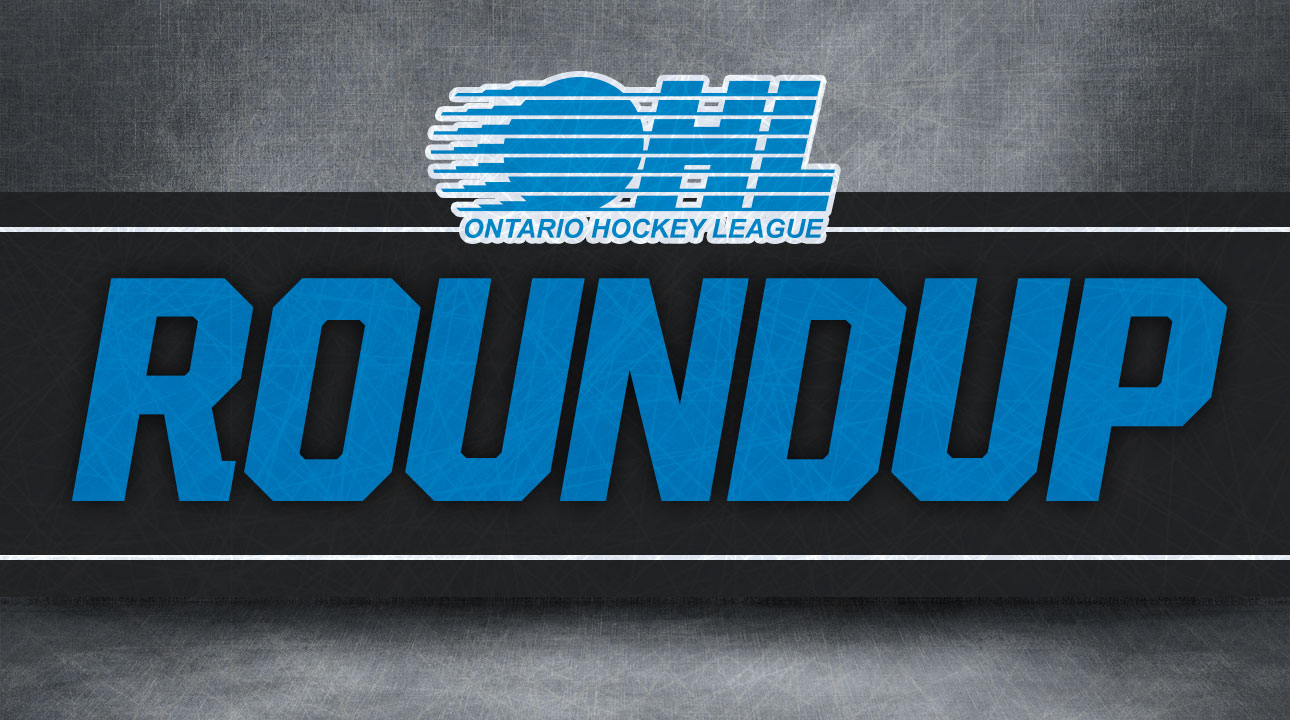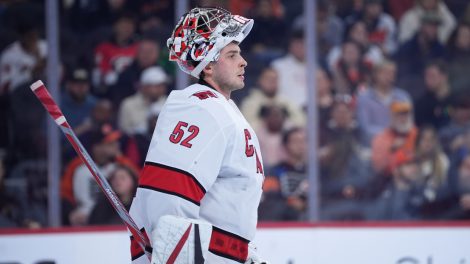Even if the Vancouver Canucks were fully healthy, they probably couldn’t hit the Washington Capitals’ fastball. There’s no shame in that. At the moment there aren’t many teams in hockey that can.
Facing a Capitals side staking a convincing claim as the class of the NHL on the road on Thursday night, the middle of Vancouver’s roster fared poorly. It would be unduly dramatic to say that the Canucks’ depth was exposed, but facing a quick, skilled, dynamic opponent, too many Canucks seemed to be stuck in the mud.
The Capitals controlled the run of play throughout Thursday night’s 4-1 victory. Despite Ryan Miller’s best efforts and a solid first period, the result was never in serious doubt.
Vancouver lost the plot a bit in the second frame and early in the third period, but it wasn’t a poor effort really. The Canucks mostly played disciplined hockey, a prerequisite against the Capitals who boast the NHL’s most lethal power play, were stellar on the penalty kill, won the special teams battle and received solid goaltending (regardless of what the score line suggests).
Though the effort seemed to be there, the execution wasn’t. Thursday’s loss wasn’t a matter of execution though. The truth is: the Canucks were outclassed by a deeper team.
“They have a very deep team,” Henrik Sedin said of the Capitals postgame. “Whenever you can bring in two first liners (T.J. Oshie and Justin Williams), you’re going to have a deep team.
“We knew it was going to be a tough game, they’ve only lost seven games for a reason and they showed why tonight.”
In discussing the Capitals as an opponent following Thursday night’s game, depth was a recurrent theme in the Canucks locker room.
“They’ve got a lot of weapons,” opined Miller of the Capitals.
“They’re a good team, they’re deep all the way through,” said Canucks coach Willie Desjardins.
“I think good teams wear you down to where you eventually make mistakes,” Willie continued later in his scrum. “And I think that’s what happened.”
Coming off of a revelatory homestand in which they drove the bus offensively, Vancouver’s second line was porous on Thursday night.
“This was kind of the first game (Horvat’s line) didn’t have as good a night,” Desjardins said. “I don’t know (why), but they just weren’t as good tonight.”
No they weren’t. With Bo Horvat on the ice at 5-on-5, the Capitals recorded 27 shot attempts while the Canucks managed only nine. And both of Horvat’s linemates, Sven Baertschi and Radim Vrbata, fared even worse by the peripheral numbers.
“They’re all about possession I think,” opined Baertschi as a reason for his line’s struggles in Washington. “We did spend a lot of time in our zone, which is part of the game. We played against some great players out there and we played against (Evgeny) Kuznetsov’s line most of the time, and he loves to have the puck around him.
“I thought at times we were solid, and at times we gave up a little bit too much.”
On the Capitals’ second goal, which stood up as something of a backbreaker, Horvat, Baertschi and Vrbata were pasted in their own end of the rink for more than 20 seconds. The officials didn’t make a call when Matt Niskanen mugged Baertschi immediately prior to Karl Alzner’s goal, which drew Miller’s demonstrative ire, but it was a dominant – and typical – shift for the Capitals long before the referees swallowed their whistles.
“Honestly everybody stopped because everybody thought it was going to be a penalty,” Horvat said of that crucial sequence. “Even their guys stopped.
“Alzner was the only one who kept going with the play because everybody else thought it was going to be a penalty, that’s just the way it goes. We’ve got to finish off the shift.”
By the game’s end the Capitals had scored all of their goals, aside from an empty-netter, at even strength. And Washington scored none of those 5-on-5 goals against the Canucks’ top line or top pair.
It was, perhaps, one of those games where the Canucks couldn’t overcome the myriad of injuries that they’re playing through.
Horvat and the second line struggled, but you might argue that they’ve been playing a level above their pay grade since Brandon Sutter left the Canucks lineup in early November. Derek Dorsett wasn’t a particularly successful fill-in for Jannik Hansen on the top line, though he didn’t seem to be holding back their usual cycle game. And though Alex Biega and Matt Bartkowski have performed admirably in second pair duty over the past five weeks, Dan Hamhuis’ absence has been sorely felt.
No NHL player or coach will ever admit that injuries are a factor. At this level, it’s taboo. Desjardins did admit after the game though, in discussing his decision to pair Dorsett with the twins on Thursday, that he felt as if his options were limited.
“I’d looked at other things,” Desjardins said. “Maybe I’ll go back to (Alex Burrows), but I thought Dorsett was good. I wanted to try and see Burrows with (Linden) Vey and (Emerson) Etem and see what I could get out of that, and the Horvat line had been good, didn’t have a great night tonight.
“So my options were limited a little bit, with trying to get other lines together as well…”
What’s dogging this Canucks team goes well beyond injuries though. The Capitals have seven players with double-digit goal totals. The Canucks have three.
“It’s a good team to gauge yourself against,” Desjardins said of the Capitals following Thursday’s game, “because they’re a good team.”
And in gauging the Canucks against the Capitals, it’s clear that high quality depth is where the Canucks fall well short.
Players like Hamhuis, Hansen and Sutter will help when they get back into the lineup, sure, but Thursday night’s loss to the Capitals was more evidence that, regardless of which players are in the infirmary at the moment, Vancouver’s deficit of talented two-way players will be glaring whenever they face a team with contender-level depth.
If nothing else, it’s something the organization needs to keep in mind as the 2016 NHL trade deadline approaches.








